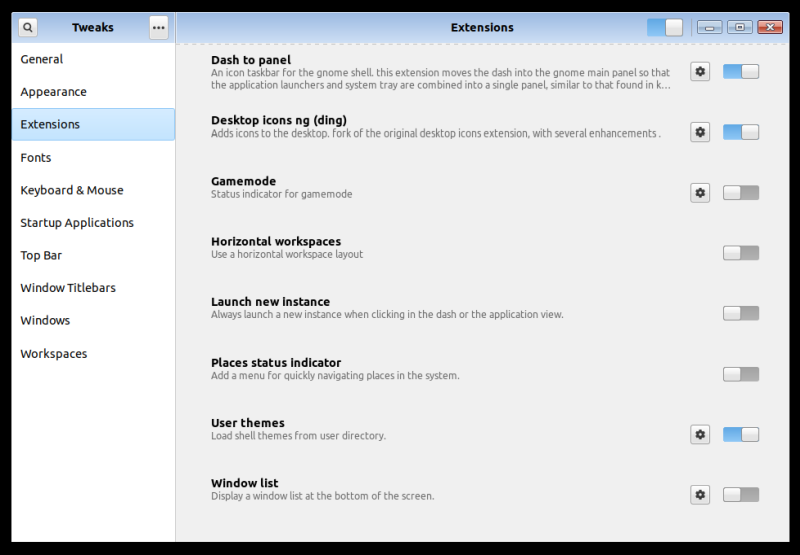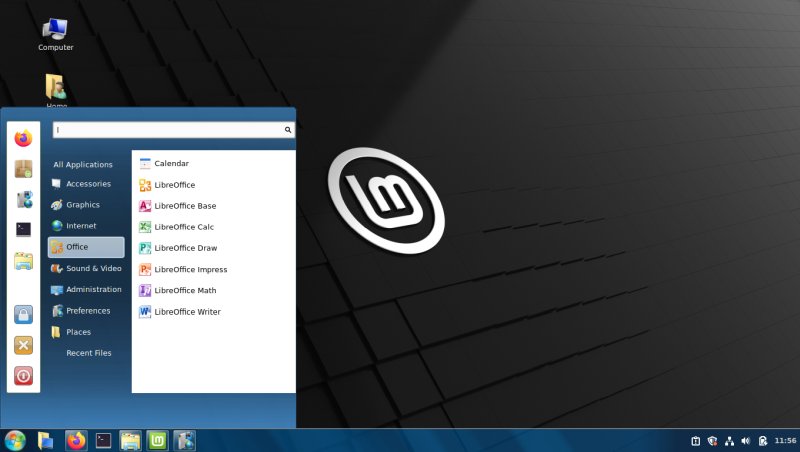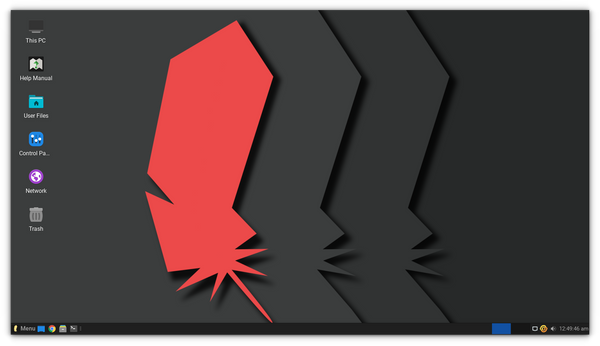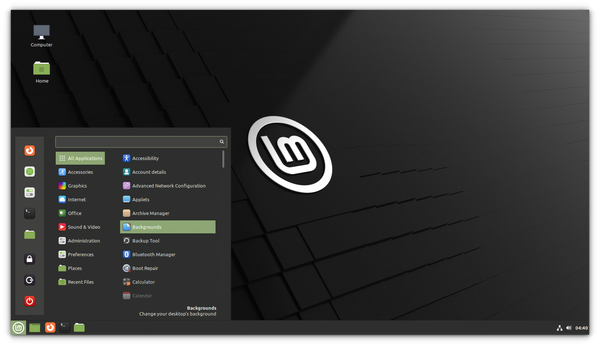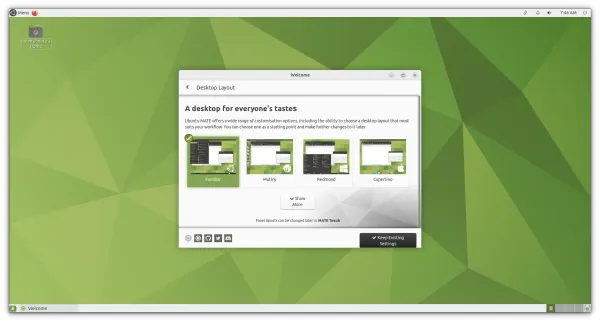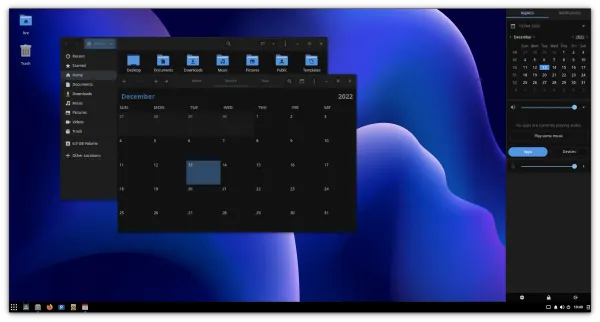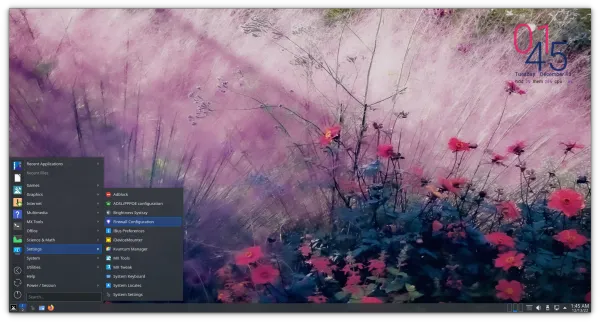Linux look for windows
Here we go again. Roughly three years ago, I showed you how to skin your Linux installation to look more like Windows, should your particular taste lean in that direction. It was an interesting little experiment. Also nerdy to the core. But apart from possible nostalgia and tech glamor, there might also be practical reasons for why someone would want to make their distro look more like a Microsoft product. And the answer is: entice non-techie people who expect the familiar.
Say you install a distro for folks with zero Linux knowledge and some rudimentary Windows familiarity. Normally, this is a recipe for disaster. I call this The Grandma Gentoo Test (TGGT), AKA how likely is the ordinary person to master the subtleties of computer usage without your nerdy help? But this is true for all operating systems, except Windows had been around for a long time, and it’s the primary desktop interface that most people somewhat know how to somewhat use. So then, can you make your chosen distro behave like Windows, and nonce the wiser?
Attempt 1: Fedora
I decided to start my test with a distro running the Gnome desktop environment — modified with a bunch of extensions to look and behave like the classic desktop. My chosen themes still hail from the B00merang project, which I also used three summers back. Icons and themes, for Windows 7 and Windows 10. Let us commence. I downloaded the stuff, extracted the archives, and duly copied them into their respective hidden folders inside my home directory. Then I used Gnome Tweaks to change things. I also needed to enable user shell extensions, so I could properly skin the system.
Results? So so. There were quite a lot of artifacts. The effects aren’t seamless, and there’s a weird mix of native icons, or near as, and the added icon packs. The skinning of window elements works mostly fine, but then you get odd things like item selection, pale elements on pale background, and vice versa. This could work, but maybe even the normies would be able to spot the difference.
Attempt 2: Linux Mint
I decided to try the Cinnamon desktop next — well, similar to my first article. Here, the results are a bit more promising. Mint also gives us a fairer chance, ’cause it be like Windows in spirit and looks, to some extent. Overall, the integration looks better. I found the Windows 7 theme to offer a more complete look & feel — but far from perfect. The system menu shading is weird. The Windows 10 theme looks worse, with more artifacts, including icons that don’t match the background, very non-Windowsy elements and such.
What about KDE?
This time I didn’t do any KDE testing. One could argue that KDE has a very Windows-like feel to begin with, with a classic layout. And it’s also extremely customizable, as I’ve shown you in my Mac transformation and Unity transformation guides. So perhaps I should invent some extra time and get the Windows side of things going, too. Something for future articles, perhaps. Hint hint, wink wink.
Conclusion
Three years later, there’s some good progress, I must say. The b00merang Windows themes look a bit better than before. If you’re aiming to confuse your non-techie friends, you have a better chance of doing it today than you could in 2018. Of course, you need to throw in some nice wallpapers and fonts, too. But fundamental issues will remain — like application names for instance, and unless you’re willing to invest a lot of energy, you can’t — and shouldn’t — really make Linux be 100% like Windows. Because when problems do arise, and they shall, the users will be even more confused than they started.
Well, we haven’t achieved much, but this is a decent start. If you want a Windows-look experience, Mint with the Windows 7 pack seems to give the best results in my little test. But I’m now quite curious how far I can take this endeavor, and will see if I can do a proper KDE transformation. Anyway, we’re back where we started, boomerang style. Hi hi. Take care.
7 Linux Distributions to Replace Windows 11 & 10
Windows experience is changing. Some people hate Windows 11, and some people hate the updates on Windows 10. So, it is not entirely a good desktop experience for many.
Do you hate the Windows experience too? Is your computer not eligible for an upgrade with slightly dated hardware? Fret not; Linux distributions that look like Windows can be of use. You will get a similar user interface layout and more benefits for using Linux. Here, I have picked some of the best Linux distributions for Windows users that you’d find comfortable using. Suggested Read 📖
Best Linux Distributions To Replace Windows
Windows 10 users may not have the latest and greatest hardware to upgrade to 11 — so it is essential to suggest a Linux distribution that is lightweight and easy to use. Linux Lite targets Windows users with a similar UI offering a taskbar, Windows-inspired wallpaper, and a lot more to go on with that, including the Libre Office suite. You do not need to upgrade your system to run this distribution. Linux Lite should work perfectly fine with an old configuration as well.
Suggested Read 📖
2. Zorin OS
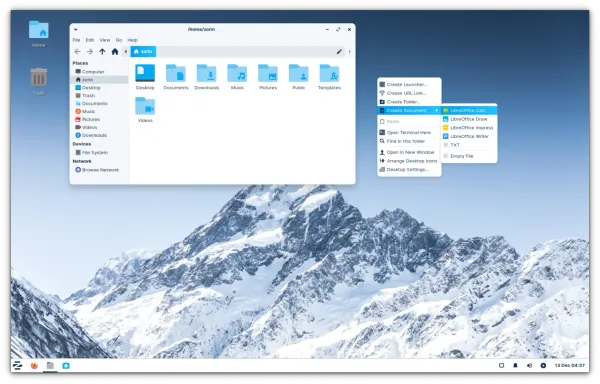
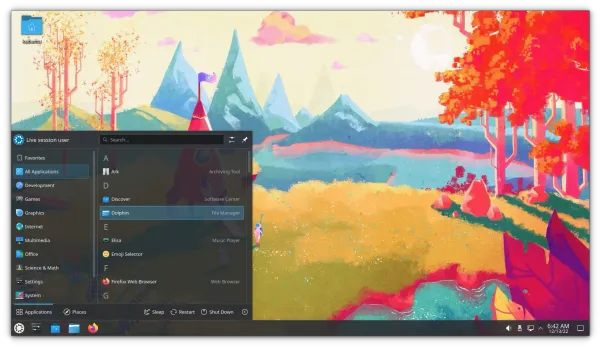
4. Linux Mint
Linux Mint targets Windows 7/10/11 users trying to make the switch to Linux. Many users also use it as a replacement for Windows because of its familiar user interface and useful features. Among all the others mentioned in this list, Linux Mint would be my personal recommendation. Linux Mint is reliable, performs great, and offers several desktop environment editions (including the MATE desktop). If you’re curious, you can also take a detailed look at how it looks and works for one of its recent releases Linux Mint 21.
5. Ubuntu MATE
Ubuntu MATE is another Windows alternative Linux distribution that provides a snappy experience across various hardware configurations. This may not directly resemble the UI of Windows in general – however, you will find it quite easy to get comfortable with. It is also interesting to note that Ubuntu MATE works well with NVIDIA’s Jetson Nano, which is one of the Raspberry Pi alternatives. You can try this if you want a unique experience with a similar layout!
6. Solus
Solus is one of the most beautiful Windows replacements. You may like it more than Windows 11. It is not based on Ubuntu, so unless you are not comfortable taking up a slight learning curve, you should stick to the options mentioned above. This is an independently developed Linux distribution aimed at making the home computing experience elegant and easier. You will get several essential tools pre-installed to get started quickly. It offers a “Budgie” desktop and other desktop editions if you want.
Suggested Read 📖
7. MX Linux (KDE)
MX Linux is one of the popular distributions based on the Debian stable branch. MX Linux offers many built-in GUI utilities to manage your computer out-of-the-box, which will be very helpful for starters. Its flagship edition offers an XFCE desktop, and KDE Plasma and Fluxbox options are also available.
Wrapping Up
Potentially, you can install any beginner-friendly Linux distribution. Unless you want to try multiple options before deciding, you may want to stick to some of the recommendations above. 💬 I recommend trying the distributions mentioned in this article if switching from Windows to Linux. If you’ve tried something else and like it a lot – feel free to let me know in the comments below.

